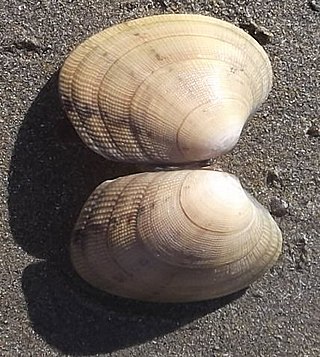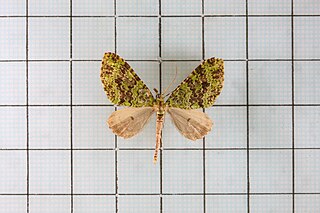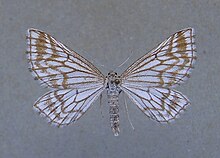
A saltire, also called Saint Andrew's Cross or the crux decussata, is a heraldic symbol in the form of a diagonal cross. The word comes from the Middle French sautoir, Medieval Latin saltatoria ("stirrup").

Yellowjacket or yellow jacket is the common name in North America for predatory social wasps of the genera Vespula and Dolichovespula. Members of these genera are known simply as "wasps" in other English-speaking countries. Most of these are black and yellow like the eastern yellowjacket and the aerial yellowjacket ; some are black and white like the bald-faced hornet. Some have an abdomen with a red background color instead of black. They can be identified by their distinctive markings, their occurrence only in colonies, and a characteristic, rapid, side-to-side flight pattern prior to landing. All females are capable of stinging. Yellowjackets are important predators of pest insects.

Trachemys is a genus of turtles belonging to the family Emydidae. Members of this genus are native to the Americas, ranging from the Midwestern United States south to northern Argentina, but one subspecies, the red-eared slider, has been introduced worldwide. Species under this genus are commonly referred to as sliders.

Microbiota is a monotypic genus of evergreen coniferous shrubs in the cypress family Cupressaceae, containing only one species, Microbiota decussata. The plant is native and endemic to a limited area of the Sikhote-Alin mountains in Primorskiy Krai in the Russian Far East. Microbiota is not to be confused with the range of microorganisms of the same name. The genus name was derived from micro-, meaning "small", + Biota, the genus name for a closely related conifer, a species formerly called Biota orientalis, now renamed Platycladus orientalis.

Dynastes tityus, the eastern Hercules beetle, is a species of rhinoceros beetle native to the Eastern United States. The adult's elytra are green, gray or tan, with black markings, and the whole animal, including the male's horns, may reach 60 mm (2.4 in) in length. The larvae feed on decaying wood from various trees.

Cleridae are a family of beetles of the superfamily Cleroidea. They are commonly known as checkered beetles. The family Cleridae has a worldwide distribution, and a variety of habitats and feeding preferences.

The Limacodidae or Eucleidae are a family of moths in the superfamily Zygaenoidea or the Cossoidea; the placement is in dispute. They are often called slug moths because their caterpillars bear a distinct resemblance to slugs. They are also called cup moths because of the shape of their cocoons.

Syntelia is a genus of beetles. It is the only genus in the family Synteliidae. There are seven known species, which are native to high-elevation regions in southern North America from central Mexico to Guatemala, and in eastern Asia, from India to Japan and eastern Russia. They are generally associated with rotting logs, typically found under bark, though the Mexican species S. westwoodi has been found inside large decaying columnar cacti. Adults and larvae are predatory, feeding on insect larvae. A fossil species, Syntelia sunwukong, is known from the Late Cretaceous (Cenomanian) aged Burmese amber of Myanmar. Adults are around 1–3.5 centimetres (0.39–1.38 in) in length. The characteristics of the family and genus include geniculate antennae with 3-segmented club, elongate body, narrowly separated coxae and tarsi with bisetose empodia. Only one abdominal segment is exposed behind elytra. The genus described by John O. Westwood in 1864, while the family was erected by George Lewis in 1882. They are members of Histeroidea, which also includes clown beetles (Histeridae).

Verticordia decussata is a flowering plant in the myrtle family, Myrtaceae and is endemic to an area in the north of the Northern Territory. It is an open shrub with distinctive leaves and leaf arrangement and small spikes of cream to white flowers on the ends of the branches.

The Cuban slider is a species of turtle native to Cuba, but has also been introduced to Grand Cayman and Cayman Brac in the Cayman Islands, and Marie Galante in Guadeloupe.

Schistostege is a genus of moths in the family Geometridae erected by Jacob Hübner in 1825.

Acleris semipurpurana is a species in the moth family Tortricidae, and one of several species of moth commonly known as oak leaftier or oak leaf tier. The larvae feed on the leaves of oak trees in the Eastern United States and southeastern Canada which can be a major cause of defoliation. The loss of leaves can kill or damage the affected trees, which are chiefly in the Lobatae or red oak section of Quercus, or oaks.

Ithonidae, commonly called moth lacewings and giant lacewings, is a small family of winged insects of the insect order Neuroptera. The family contains a total of ten living genera, and over a dozen extinct genera described from fossils. The modern Ithonids have a notably disjunct distribution, while the extinct genera had a more global range. The family is considered one of the most primitive living neuropteran families. The family has been expanded twice, first to include the genus Rapisma, formerly placed in the monotypic family Rapismatidae, and then in 2010 to include the genera that had been placed into the family Polystoechotidae. Both Rapismatidae and Polystoechotidae have been shown to nest into Ithonidae sensu lato. The larvae of ithonids are grub-like, subterranean and likely phytophagous.

Venerupis decussata is a marine bivalve mollusc in the family Veneridae, commonly known as the cross-cut carpet shell.

Melaleuca decussata, commonly known as cross-leaf honey-myrtle or totem poles, is a plant in the myrtle family, Myrtaceae native to South Australia and both native and naturalised in Victoria. It is an adaptable shrub, grown in many parts of Australia for its attractive foliage but is regarded as an environmental weed in parts of Victoria.

Tristeirometa decussata is a moth of the family Geometridae first described by Frederic Moore in 1868. It is found in north-eastern India and Taiwan.
Cyclophora decussata is a moth in the family Geometridae. It is found in Suriname, French Guiana and Brazil.
Miltochrista decussata is a moth of the family Erebidae. It was described by Frederic Moore in 1877. It is found in eastern China.

Prostanthera decussata, commonly known as dense mintbush, species of flowering plant that is endemic south-eastern Australia. It is a dense, compact, strongly aromatic shrub with egg-shaped leaves and mauve to violet flowers with yellow streaks, arranged in leaf axils near the ends of branchlets.

Pavona decussata, sometimes known as leaf coral, is a species of colonial stony coral in the family Agariciidae. It is found in shallow water in various reef habitats, particularly on gently sloping surfaces, in tropical parts of the western and central Indo-Pacific region.



















